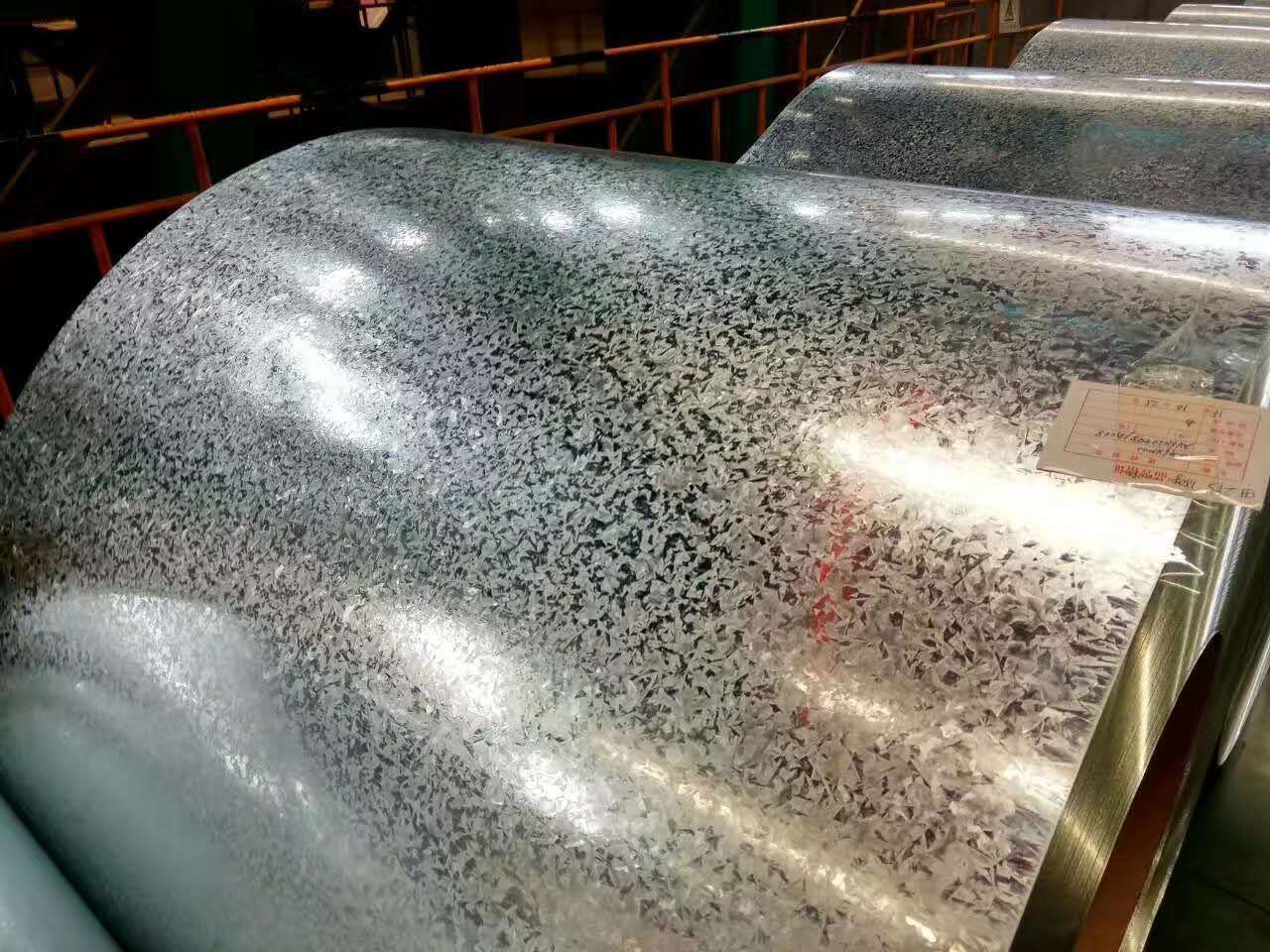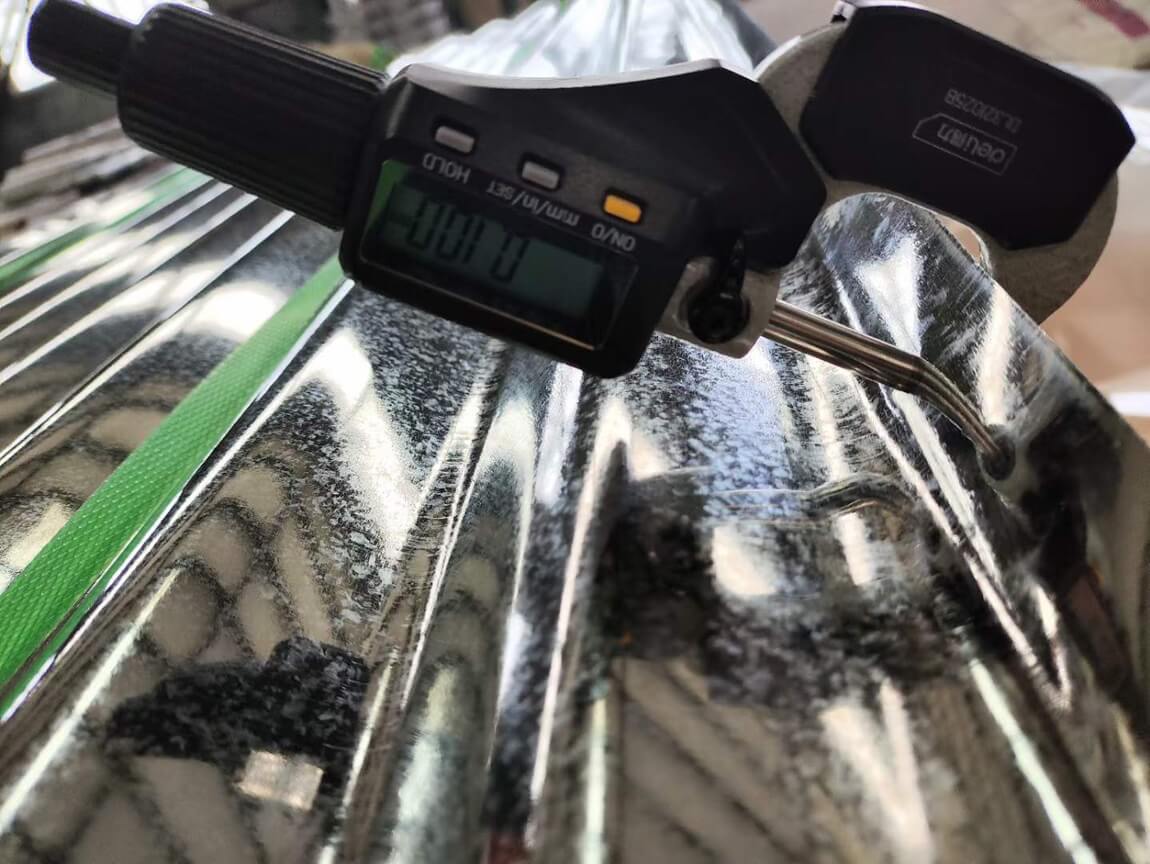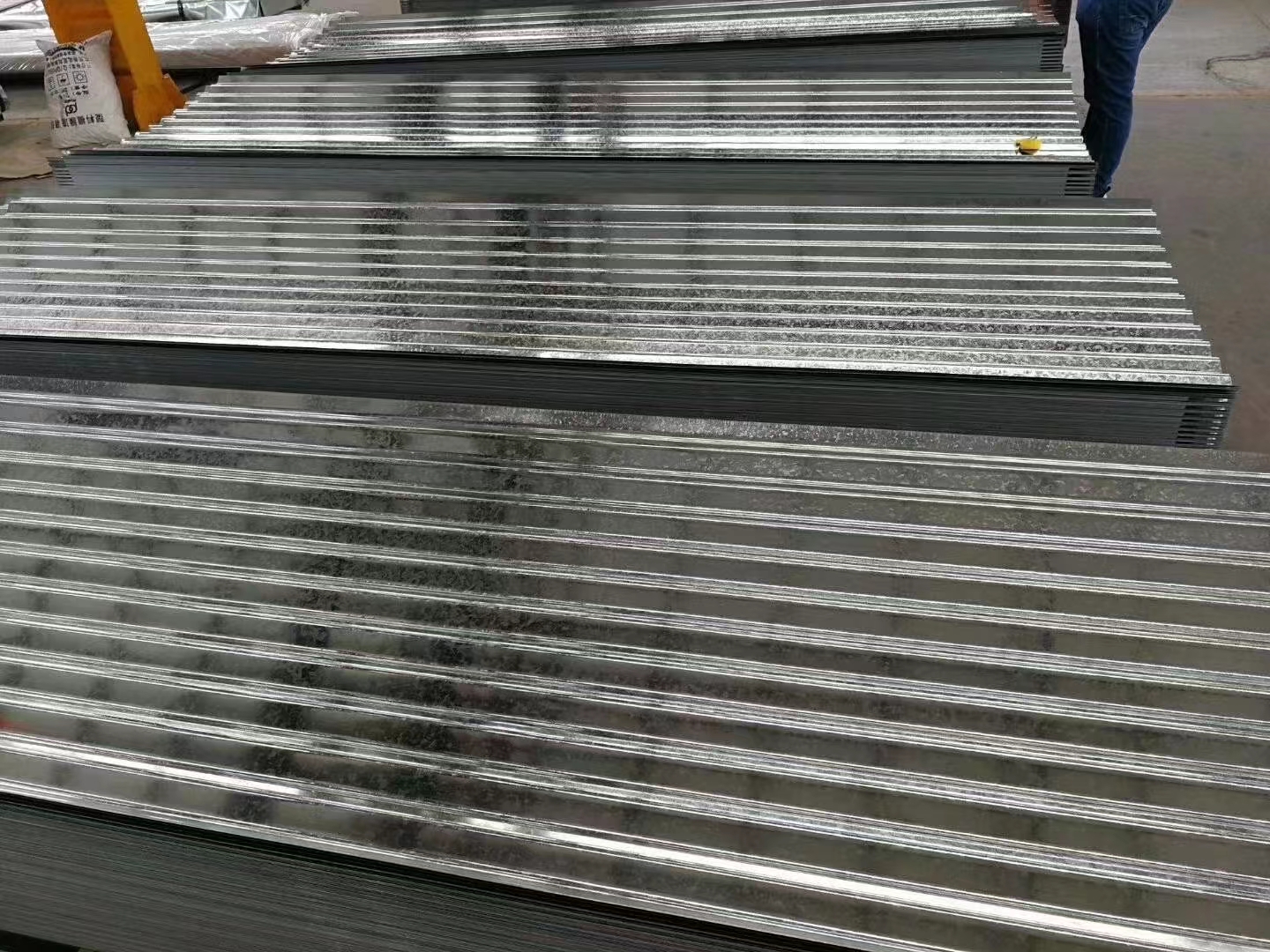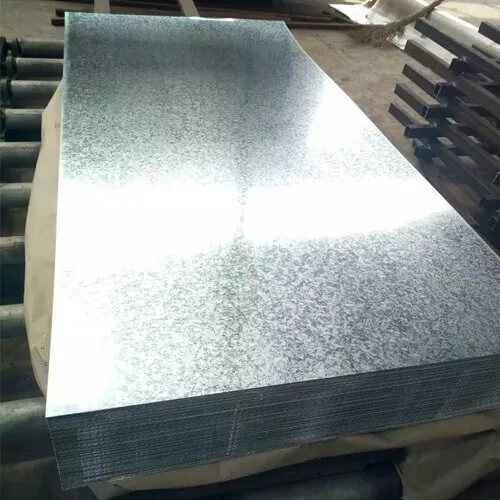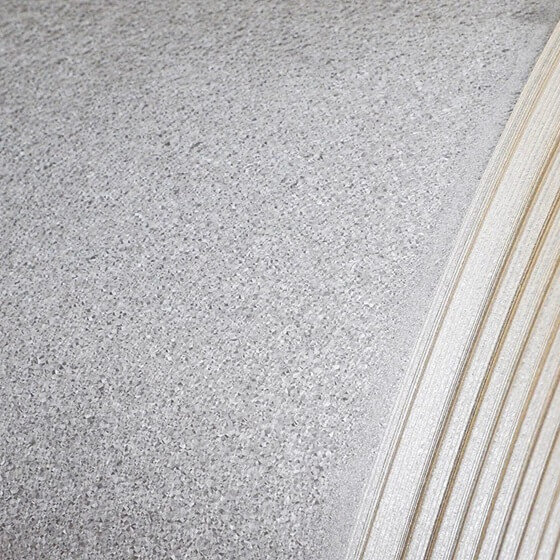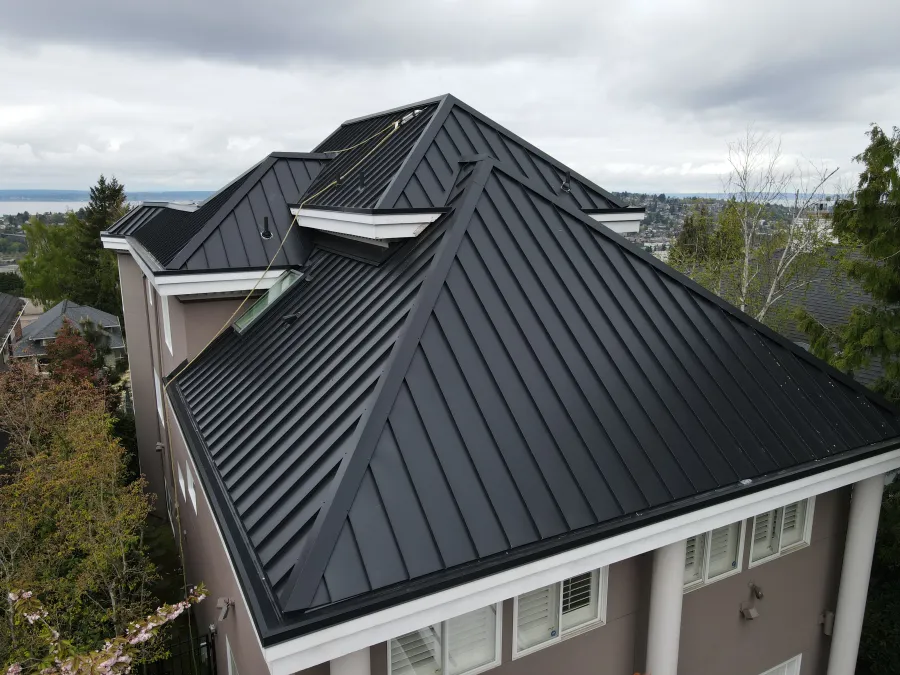What is Electro Galvanized Steel?
What is galvanizing?
Galvanizing refers to a rust-prevention method of attaching metallic zinc to the surface of iron or steel. Zinc is a highly corrosion-resistant metal that insulates iron from contact with oxygen and water, thus preventing the chemical reactions needed for iron to rust. Since zinc is more metallic active than iron, it can prevent iron from rusting in a sacrificial electrochemical way, even if the plating layer is damaged.
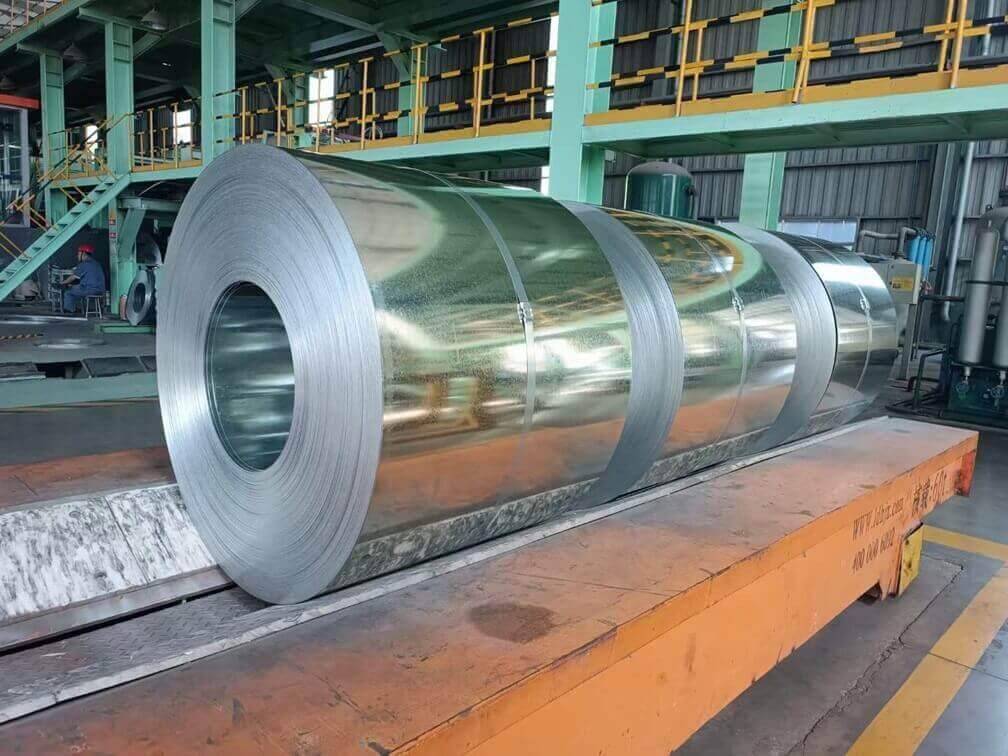
Classification of galvanizing
The main methods of galvanizing are hot-dip galvanizing (HDG), electro galvanized (EG) and cold galvanizing. According to archaeological finds, iron was galvanized as early as the 1680s.
Hot dip galvanizing (HDG)
Hot dip galvanizing is to immerse steel materials in molten zinc liquid to form a zinc coating on the surface of the steel. This method can provide a thick and uniform zinc layer and is suitable for the anti-corrosion treatment of most steel products.
Cold Galvanizing & Electro Galvanized (EG)
Electro Galvanized is also called Cold Galvanized in China. In the process of electro-galvanizing, a chemical substitution reaction is used. The iron or steel to be galvanized is the cathode, the zinc to be plated is the anode, and the zinc salt solution serves as the electrolyte. The metal elements on the metal surface are replaced with zinc through chemical reactions. To form a coating, the thickness of the zinc layer is generally from 7-40 microns. Compared with hot-dip galvanizing, the advantage of electro-galvanizing is that the zinc layer is more uniform and relatively thin.
Electro galvanized production process
Electro galvanized is a process that deposits a layer of zinc on the surface of steel through an electrochemical reaction. The following is the detailed production process of electro-galvanizing, divided into several main steps.
1. Pre-treatment
Cleaning
First, the steel needs to be thoroughly cleaned to remove oil, dust, and other impurities from the surface. This step is usually cleaned with an alkaline cleaner and then rinsed with water.
Pickling
the steel is pickled to remove oxides and rust from the surface. Commonly used pickling solutions are hydrochloric acid or sulfuric acid. After pickling, the surface of the steel becomes clean, which is conducive to the subsequent galvanizing process.
Infiltration After pickling
the steel is usually wetted to keep its surface moist and prevent oxidation in the air. Specific sizing can be used for this step.
2. Electro galvanized
Electrolyte preparation
The main components of the electrolyte used in the zinc electroplating process are zinc sulfate (ZnSO₄) and potassium chloride (KCl). The zinc ions in the electrolyte will be deposited on the steel surface during the electrochemical reaction.
Electro Galvanized
plating Steel serves as the cathode (negative electrode) and is immersed in the electrolyte. Zinc serves as the anode (positive electrode) and is also immersed in the electrolyte. When electric current passes through the electrolyte, zinc ions are reduced on the cathode and deposited on the steel surface, forming a uniform zinc coating.
3. Ater-treatment
Passivation
After electro galvanizied, the steel is usually passivated to improve the corrosion resistance of the zinc layer. Passivation usually uses chromate or other chemical agents to form a protective film.
Washing and drying
After passivation, the steel needs to be washed again to remove residues from the surface. After washing, the steel needs to be dried to ensure that no moisture remains on the surface.
Quality checks
Finally, the galvanized steel is inspected for quality to ensure that the zinc coating is uniform and meets specifications. Common inspection methods include thickness measurements, visual inspections, and corrosion resistance tests.
The Advantages and Disadvantages of Electro Galvanized
Advantages
Excellent anti-corrosion performance
Electro galvanized can form a zinc coating on the surface of steel, which effectively prevents steel from coming into contact with oxygen and moisture in the air, thereby avoiding rust and corrosion. This gives electro galvanized products good durability in wet and corrosive environments.
Beautiful surface
The surface after electro-galvanizing is smooth and uniform, with a good decorative effect. This makes electro galvanized steel suitable for applications that require an aesthetically pleasing appearance, such as appliances and automotive parts.
Easy for further processing
Electrogalvanized steel performs well in subsequent processing and is easy to perform, with operations such as cutting, welding, and forming. This facilitates the manufacture of parts of a wide range of complex shapes and sizes.
Good adhesion
The electro-galvanized layer has good adhesion between the substrate and is not easy to fall off or peel off. This ensures that the coating remains stable and durable during use.
Cost-effective
Compared to other corrosion protection treatments, the electro galvanized process is relatively cost-effective and can provide effective protection without significantly increasing costs.
Disadvantages
Environmental impact
The chemicals used in the zinc plating process (such as electrolytes and passivators) may have a negative impact on the environment, especially if they are improperly handled. This requires manufacturers to take strict environmental protection measures to ensure the reasonable treatment of wastewater and exhaust gases.
Limited anti-corrosion life
Although the electro galvanized zinc layer can provide effective anti-corrosion protection, its life is limited. In extremely corrosive environments, the electroplated zinc layer may require regular inspection and maintenance to ensure its protective effect.
The thickness of the coating is limited
In the zinc plating process, the thickness of the coating is usually thinner, generally between 5 and 25 microns. This may not be enough to meet the requirements for thick coating in some applications, such as steel structures used in marine environments.
The process is complex
The zinc plating process involves multiple steps, including pretreatment, electroplating and post-treatment. Each step requires strict control of the process parameters. This increases the complexity and difficulty of production. 5. Potential hydrogen embrittlement problem During the electroplating process, hydrogen gas may penetrate into the steel, causing hydrogen embrittlement, making the material brittle and easily breaking. Especially for high-strength steel, this issue requires special attention.
Properties of electro galvanized
Anti-corrosion properties
The most significant advantage of electro-galvanized steel is its excellent corrosion protection. Zinc coatings prevent rust and corrosion by effectively blocking air, moisture and other corrosive substances from coming into contact with the steel. This allows electro-galvanized steel to have a longer service life in wet and corrosive environments.
Mechanical properties
Electro galvanized steel retains the good mechanical properties of the base steel, including high strength and toughness. Electrogalvanized layers have little effect on the strength and ductility of the steel and still meet the requirements of most structural and manufacturing applications. The material performs well under stress and deformation conditions, making it suitable for structural parts and assemblies that require high strength and durability.
Surface hardness and abrasion resistance
The electro galvanized layer has a certain hardness and wear resistance, which can protect the steel surface from mechanical wear and damage to a certain extent. This makes electro-galvanized steel excellent in applications that are prone to wear and tear, such as automotive parts and machinery.
Electrical properties
Zinc has good electrical conductivity, so electro-galvanized steel has an advantage in some electrical applications. For example, it can be used in the manufacture of electrical grounding devices and conductive components to ensure good conductivity and electrical safety.
Solderability
Electro galvanized steel usually has good weldability, but care needs to be taken to avoid damage to the zinc layer and the generation of zinc vapor during the welding process. With proper welding processes and protective measures, the quality and strength of welded joints can be ensured.
Environmentally friendly
The modern electro galvanized process reduces the negative impact on the environment by employing environmentally friendly electrolyte and wastewater treatment technologies. Compared with the traditional hot-dip galvanizing process, the electro-galvanizing process is more environmentally friendly and has less waste emissions during the production process.
Electro galvanized production standards
• ASTM A879/A879M: Standard specification for steel plates coated with zinc by electrolytic process for applications that require a specified coating quality for each surface.
• ASTM A591/A591M: Standard Specification for Electrolytic Galvanized Steel Sheet for Light Coating Quality Applications.
• JIS G3313: Electrolytic galvanized steel sheet and steel strip.
Application of electro galvanized
Galvanizing is a universal anti-rust method, and steel materials of different sizes and shapes can be galvanized. White iron specifically refers to galvanized iron, which is widely used in petrochemical, telecommunications, power supply, transportation, construction, machinery, agriculture and other fields, and plays a key role in daily life. Here are some application examples:
• Petrochemical: oil pipelines, oil well pipes, petroleum processing equipment, oil storage vessels, condensate coolers.
• Telecommunications: radio masts and towers, communication cables.
• Power supply: power towers, substations.
• Transportation: highway guardrails, road or rail nets, ship hoisting wire ropes, road or railway noise barriers, wind barriers, snow barriers, road signs, street lights.
• Construction: scaffolding, drains, plumbing, electrical wiring casing, burglar-proof windows.
• Mechanical: household appliances, motor housings, ventilation device housings.
• Agriculture: greenhouses, greenhouse pipes, greenhouse skeletons, sprinkler irrigation equipment.
• Military: Nissen Cottage (made of corrugated galvanized iron, commonly used in World War I and World War II).
It should be noted that ingestion of zinc may cause poisoning, so it is not advisable to use galvanized kitchen utensils for cooking. If you use a galvanized container to hold food with a high water content, the food may be contaminated with zinc; The more acidic the food, the greater the risk. As a result, the U.S. Food and Drug Administration’s Codex Alimentarius published in 2009 stipulates that white iron should not be used as utensils that come into contact with acidic foods.
Maintenance of electro galvanized
Compared to other rust prevention methods of cladding iron or steel with a protective layer, galvanizing is less expensive in both the initial and long-term costs. Due to the relatively stable price of zinc and the efficiency of hot-dip galvanizing technology, the cost of hot-dip galvanizing is lower than that of other anti-corrosion systems, and it is more competitive. At the same time, in most environments, hot-dip galvanized steel can be maintained for 70 years or more, increasing the life expectancy of the object and increasing the economic benefits by two to six times
Conclusion
Galvanizing is an effective anti-rust method that protects steel from corrosion by attaching a layer of zinc to the surface of the steel. Electrogalvanizing, as the main galvanizing method, has good anti-corrosion properties, an aesthetically pleasing surface, easy further processing, good adhesion and cost-effectiveness. However, electro galvanizing also suffers from environmental impacts, limited corrosion protection life, limited coating thickness, process complexity, and potential hydrogen embrittlement. When choosing a galvanizing method, it is necessary to comprehensively consider the specific application environment and needs to select the appropriate galvanizing process.
How Much Does Metal Roofing Cost?
Galvalume steel is priced similarly to galvanized steel. Galvalume Metal roof is generally more affordable than other traditional standing seam metal roofing methods and lasts much longer.
How to Find Electro Galvanized Steel Suppliers?
If you want to find a reliable steel maufacturer in China, we will be happy to help you with a free consultation. I wrote an article about 5 Tips to Help You Select Galvanized Steel Coil Manufacturers in China. You can refer to this method to find good suppliers.

